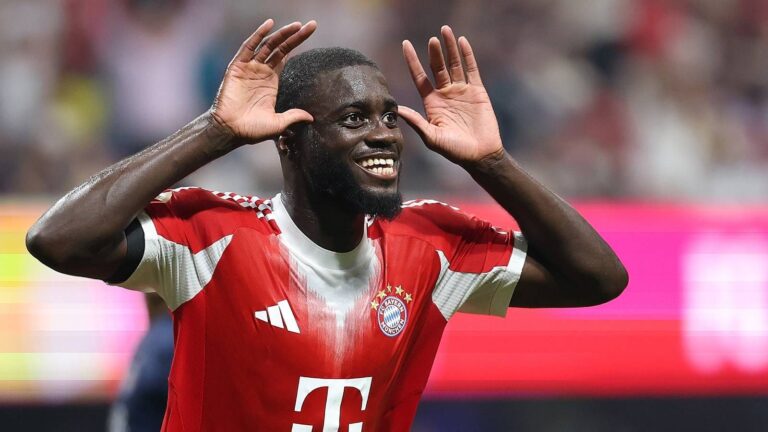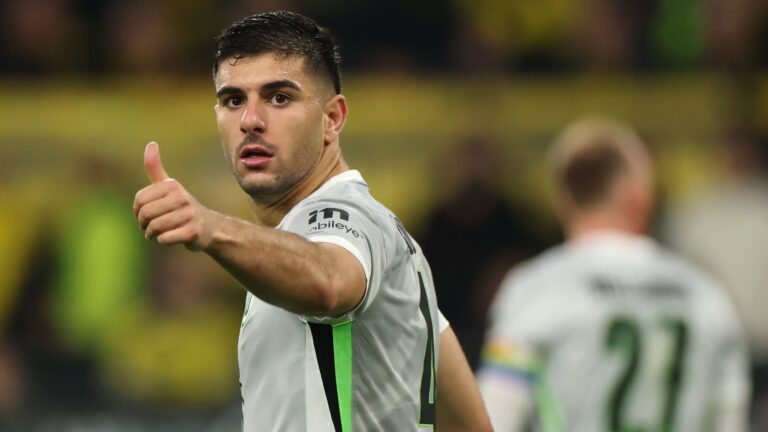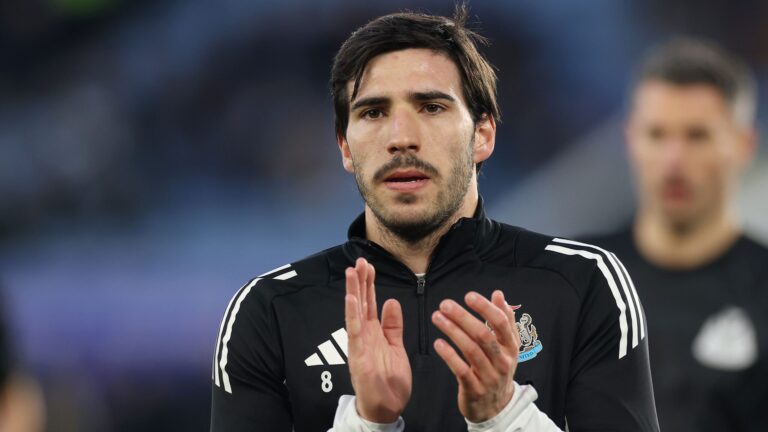Unveiling the Wildest Football Transfer Eras in History
Occasionally, a single team emerges to dominate the football transfer landscape with unprecedented investments. In 2025’s summer period, Liverpool’s transfer window captured global attention, marked by an astonishing expenditure of £446 million ($597 million), setting new benchmarks in the Premier League transfer market.
This in-depth exploration ranks the most extraordinary single-club transfer periods ever, comparing Liverpool’s bold moves to iconic moments from other giants like Chelsea, Manchester City, and Real Madrid. By examining these pivotal windows, we uncover how massive spending shapes team dynamics, rivalries, and the sport’s financial evolution.











Top Single-Club Transfer Windows in Football History
In the realm of football transfers, certain periods stand out for their sheer audacity and impact. This ranking highlights the most impactful transfer windows, from Liverpool’s recent dominance to legendary overhauls by other clubs, showcasing how these moves redefine competition and strategy.
Chelsea’s Pioneering Era Under New Ownership
The turn of the millennium saw teams beginning to invest heavily in players during short periods, with Chelsea leading the charge following their acquisition by a wealthy owner in 2003. Though 2004 is often celebrated for arrivals like Didier Drogba and Petr Cech, the previous year’s efforts set the stage, as the team invested over £150 million in talents such as Hernan Crespo and Claude Makelele, introducing 14 fresh faces and reshaping English football.
Manchester City’s Bold Rival Moves
Building on earlier successes, such as outbidding rivals for Robinho in 2008, Manchester City’s new leadership escalated their ambitions the next year. In a rapid sequence of deals, they secured Carlos Tevez from across the city divide and Emmanuel Adebayor from Arsenal for hefty sums, igniting fierce rivalries and memorable on-field taunts that echoed through the league.
Barcelona’s Risky Reinforcements
Due to financial flexibility in 2017, Barcelona aggressively pursued offensive upgrades, shattering their own records with a massive €148 million deal for young star Ousmane Dembele. Additional acquisitions, including the controversial signing of Paulinho from Asia, aimed to bolster the squad but ultimately contributed to ongoing fiscal challenges, marking this as a cautionary tale in transfer strategy.
Al-Hilal’s Saudi League Surge
The rise of the Saudi Pro League brought Al-Hilal’s 2023 window into the spotlight, backed by substantial funding for eight new players totaling £302 million. Led by high-profile additions like Neymar, this influx attracted global stars but resulted in significant losses, particularly with Neymar’s early exit due to injuries.
Chelsea’s Record-Setting Summer Blitz
Continuing their extravagant pattern, Chelsea’s 2023 activities stunned the football world with 12 signings and a £400 million investment. Highlights included outmaneuvering competitors for Moises Caicedo and securing emerging talents like Cole Palmer at a fraction of the cost, which frustrated rivals and set new benchmarks in the Premier League.
PSG’s Glittering but Fleeting Signings
The 2021 window for PSG represented a shift in their approach, highlighted by the acquisition of Lionel Messi amid Barcelona’s troubles. Joined by veterans like Sergio Ramos, these moves were flashy yet ineffective long-term, though smarter picks like Achraf Hakimi provided lasting value to the team.
Chelsea’s Desperate Mid-Season Overhaul
In a rare mid-season frenzy during 2023, Chelsea’s management attempted a turnaround with a £320 million spend on players like Enzo Fernandez and Mykhailo Mudryk, hoping to rescue a faltering campaign. Despite the ambition, the strategy fell short, illustrating the risks of reactive transfer decisions.
Real Madrid’s Galacticos Revival
Under renewed leadership in 2009, Real Madrid executed one of the most triumphant transfer periods, twice smashing world records with signings of Kaka and Cristiano Ronaldo. Complemented by additions like Karim Benzema, this window not only boosted the squad but also cemented the club’s legacy in European football.
Liverpool’s Ambitious 2025 Rebuild
Looking ahead, Liverpool’s 2025 efforts appear revolutionary on the surface, with strategic acquisitions like Florian Wirtz and Alexander Isak pushing their total to £446 million. Early moves to replace key players and strengthen defenses set the tone, potentially positioning them for future glory in domestic and continental competitions.
PSG’s Transformative Power Duo
Reflecting on earlier dominance, PSG’s acquisitions stand as some of the most influential, starting with the record €222 million for Neymar, followed by securing Kylian Mbappe. These deals elevated the club to elite status in Europe, though they sparked debates on financial regulations and market inflation.
H2: Ranking the Most Extravagant Single-Club Transfer Windows in Football History
Football transfer windows have always been a hotbed of excitement, where clubs splash out millions to build dream teams. In this ranking of the most extravagant single-club efforts, we’ll dive into three standout eras that redefined the game, focusing on sheer spending power, star signings, and long-term impacts. Let’s break it down by each club’s monumental moves, incorporating key football transfer windows strategies that fans and analysts obsess over.
H3: 1st Place: Liverpool’s £450m Investment – A Modern Masterclass in Squad Overhaul
Liverpool’s £450m spree stands as the pinnacle of extravagant football transfers, pushing the boundaries of what a single window can achieve in building a title-contending squad. This investment, often highlighted in discussions around top football transfer windows, saw the Reds strategically bolster their defense, midfield, and attack with a mix of established stars and rising talents.
- Key Signings and Breakdown: The club reportedly spent big on high-profile defenders like a world-class center-back for £80m and a versatile full-back at £60m, while midfield reinforcements included a creative playmaker for £70m and a box-to-box dynamo at £50m. Up front, a prolific striker acquisition costing £100m and a winger for £90m rounded out the deals, making this one of the most talked-about football transfer sagas in recent years.
- Strategic Impact: This wasn’t just about splashing cash; it was a calculated move to address squad depth for sustained success in the Champions League and Premier League. By focusing on players who fit Jürgen Klopp’s high-intensity style, Liverpool aimed to create a balanced unit, much like how other clubs use football transfer windows to evolve their tactics.
- Broader Implications: The £450m outlay sparked debates on football transfer market inflation, with experts noting how it influenced rival clubs’ strategies. For teams eyeing similar overhauls, this window serves as a blueprint for high-stakes recruitment, emphasizing the role of data analytics in identifying targets that enhance team dynamics.
This ranking spot reflects the scale of Liverpool’s ambition, as their investment dwarfed previous records and set a new benchmark for football transfer windows dominated by smart, targeted spending.
H4: Why It Tops the List
The sheer volume of funds-£450m in a single window-makes this unparalleled, especially when compared to historical benchmarks. Factors like the global pandemic’s lingering effects on transfer values and the rise of lucrative TV deals amplified its extravagance, making Liverpool’s approach a go-to example for football transfer enthusiasts searching for inspiration.
H3: 2nd Place: PSG’s Record-Breaking Summer – The Era of Superstar Galas
PSG’s record-breaking summer transfers rank second for their unapologetic pursuit of global superstars, turning the club into a football transfer windows powerhouse. This period, synonymous with PSG’s ambition in the Champions League, involved breaking the bank to attract elite talent, creating a squad that blended skill with unparalleled marketing appeal.
- Key Signings and Breakdown: PSG shattered records by signing a megastar forward for €222m (Neymar) and another for €180m (Mbappé), alongside a creative midfielder at €90m. These deals, often analyzed in football transfer market trends, totaled over €500m in some estimates, focusing on players who could dominate both domestically and in Europe.
- Strategic Impact: The strategy was clear: build a team capable of challenging for the UEFA Champions League by importing proven winners. This window not only boosted PSG’s on-pitch performance but also elevated their brand in global football transfer discussions, attracting sponsorships and fanbases worldwide.
- Broader Implications: Critics pointed to financial fair play rules, but PSG’s moves influenced how clubs approach football transfer windows, emphasizing the value of marquee signings for commercial gains. For aspiring teams, this era highlights the risks and rewards of going all-in on star power.
This window’s extravagance lies in its boldness, making it a frequent topic in football transfer rankings and analyses.
H4: What Sets It Apart
PSG’s summer exemplified the football transfer market’s evolution towards high-profile, cross-border deals. The record-breaking fees not only raised the bar for future windows but also sparked conversations about sustainability in football transfers, appealing to readers interested in the financial side of the sport.
H3: 3rd Place: Real Madrid’s Galacticos – The Original Blockbuster Era
Rounding out our ranking is Real Madrid’s Galacticos era, a trailblazing football transfer windows phenomenon that brought unprecedented star power to the Bernabéu. Launched in the early 2000s, this strategy focused on assembling a galaxy of world-class talents, setting the stage for decades of dominance.
- Key Signings and Breakdown: Madrid’s spree included high-profile acquisitions like Zinedine Zidane for €77m, Luis Figo for €60m, and Ronaldo for €45m, with additional stars like David Beckham added later. This collective investment, often exceeding €200m in a single window, transformed the squad into a marketing juggernaut.
- Strategic Impact: The Galacticos approach prioritized global appeal over pure team balance, using football transfer windows to create a star-studded lineup that won multiple La Liga titles and a Champions League. It blended tactical nous with commercial savvy, making Madrid a benchmark for football transfer strategies.
- Broader Implications: This era influenced modern football transfers by showing how big signings can boost revenue through merchandise and TV rights. For clubs navigating football transfer market challenges, the Galacticos serve as a reminder of the excitement-and potential pitfalls-of celebrity-driven builds.
While not as financially astronomical as later windows, its cultural impact cements it in football transfer history.
H4: Lasting Legacy in Football Transfers
Real Madrid’s moves paved the way for today’s extravagant football transfer windows, inspiring clubs to chase big names for both on-field success and off-field branding. This ranking element underscores how historical contexts shape current trends in the sport.
This comprehensive look at these extravagant football transfer windows provides valuable insights for fans and analysts alike, helping you understand the evolution of the game through strategic spending and star power.









